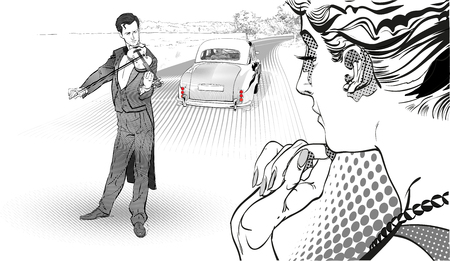1. Understanding Blue Badge Eligibility and Benefits
The Blue Badge scheme is a cornerstone of accessible driving across the UK, offering vital support to those with significant mobility challenges. Eligibility for a Blue Badge is determined by strict criteria, designed to ensure that the benefits reach those who need them most. Applicants typically qualify if they receive certain disability benefits such as the Higher Rate Mobility Component of Disability Living Allowance (DLA), Personal Independence Payment (PIP) with significant mobility points, are registered blind, or have severe difficulty walking due to permanent disability. The application process is managed by local councils and can be completed online or via post, requiring medical evidence and supporting documentation.
For drivers and passengers navigating London, the Blue Badge offers substantial advantages. Badge holders can park closer to their destination, including on single or double yellow lines for up to three hours (unless restrictions apply), and use designated disabled parking bays free of charge. This is especially crucial in London’s dense urban environment, where standard parking can be both costly and scarce. Furthermore, the scheme helps make travel in London more manageable by reducing the stress associated with finding accessible parking near key locations like hospitals, shops, and public buildings. Understanding your eligibility and making use of these benefits ensures greater independence and flexibility when travelling around the capital.
London’s Congestion Charge Explained
Driving in central London comes with its own set of challenges, especially for those seeking accessible transport solutions. The Congestion Charge is a daily fee imposed to reduce traffic and pollution within the heart of the capital. Understanding how this charge works is crucial for Blue Badge holders and anyone planning to drive in London’s busiest zones.
How Does the Congestion Charge Zone Operate?
The Congestion Charge zone covers much of Central London, including iconic areas such as Westminster, the City of London, and parts of Southwark and Lambeth. This area is clearly signposted, and Automatic Number Plate Recognition (ANPR) cameras monitor all vehicles entering or moving within the zone. The charge applies every day except Christmas Day, ensuring a consistent deterrent against unnecessary car journeys.
Key Locations Covered by the Zone
| Area | Main Landmarks |
|---|---|
| Westminster | Houses of Parliament, Trafalgar Square |
| The City | St Paul’s Cathedral, Bank |
| Southwark | Borough Market, Tate Modern |
| Lambeth | Waterloo Station, London Eye |
Daily Costs and Payment Methods
The standard daily Congestion Charge is £15 if paid in advance or on the same day, rising to £17.50 if paid by midnight on the third charging day after travel. Payments can be made online, via auto-pay systems, or at selected retail locations.
| Payment Timing | Cost per Day |
|---|---|
| In advance / same day | £15.00 |
| By midnight (third day after travel) | £17.50 |
Impact on City Driving Habits
The introduction of the Congestion Charge has notably shifted driving patterns in London. Many drivers now opt for public transport or plan their journeys outside chargeable hours to avoid extra costs. For Blue Badge holders, understanding these charges—and knowing whether exemptions apply—is essential to making informed decisions about city travel. Overall, the scheme encourages fewer car journeys into central London, reducing congestion and improving air quality for all residents and visitors.
![]()
3. ULEZ: What is It and Who Does It Affect?
The Ultra Low Emission Zone (ULEZ) is a key initiative by Transport for London (TfL) designed to tackle air pollution in the capital. ULEZ operates 24 hours a day, seven days a week, covering central London and, as of August 2023, expanded to encompass all London boroughs. The scheme enforces strict vehicle emission standards, meaning only vehicles that meet Euro 4 (petrol) or Euro 6 (diesel) requirements can enter without incurring a daily charge. For drivers in London—especially those with disabilities—the ULEZ rules are particularly significant.
Where Does ULEZ Apply?
ULEZ enforcement stretches across a vast area of Greater London, overlapping with the Congestion Charge zone but reaching far beyond it. Automated number plate recognition cameras monitor vehicles as they move into and within the zone. If your car doesnt comply with the specified emission standards, you must pay a daily fee or face fines. This wide coverage means that most journeys in and around London now fall under these regulations.
Vehicle Emission Standards Explained
To avoid ULEZ charges, vehicles must meet specific criteria: petrol cars and vans must comply with at least Euro 4 emissions standards, while diesel vehicles must meet Euro 6. These benchmarks refer to how much nitrogen oxide (NOx) and particulate matter your vehicle emits. Generally, petrol cars registered after 2005 and diesel cars registered after September 2015 are compliant—but its always best to check your registration on the TfL website before driving.
Why Is ULEZ Relevant to Disabled Drivers?
For Blue Badge holders and other disabled motorists, understanding ULEZ is crucial. While the aim is cleaner air for everyone—including those more vulnerable to pollution—ULEZ fees can place an added burden on disabled people who may rely heavily on private vehicles for mobility. Although some exemptions exist, these are time-limited and not automatic; disabled drivers need to actively register their vehicles for any applicable discounts or waivers. Failing to do so could result in unexpected costs or penalties, making it vital for Blue Badge holders to stay informed about current rules and eligibility criteria.
Exemptions and Concessions for Blue Badge Holders
If you are a Blue Badge holder driving in London, understanding the exemptions and concessions available under both the Congestion Charge and Ultra Low Emission Zone (ULEZ) is crucial to avoid unnecessary charges. Below is a detailed guide outlining eligibility, how to register, and the required documentation for each scheme.
Congestion Charge Exemption
Blue Badge holders are not automatically exempt from the Congestion Charge. However, if you meet certain criteria, you can apply for a 100% discount. The process requires registration with Transport for London (TfL) and verification of your status.
Eligibility & Registration Steps
| Requirement | Details |
|---|---|
| Who can apply? | Blue Badge holders who either drive or are driven within the Congestion Charge zone. |
| Application Method | Online via TfL website, or by post using the relevant forms. |
| Documentation Needed | – Copy of valid Blue Badge – Proof of vehicle ownership or regular use – Photographic ID (e.g., driving licence or passport) |
| Fee | A £10 registration fee (one-off) |
| Duration | Discount valid as long as Blue Badge remains valid; renewal required upon expiry. |
ULEZ Exemption for Disabled Vehicles
The ULEZ is designed to reduce emissions but does allow certain exemptions for disabled individuals. There are two main routes for exemption:
Route 1: Disabled Tax Class Vehicles
If your vehicle is registered with DVLA in the disabled or disabled passenger vehicle tax class, it is automatically exempt from ULEZ charges until 24 October 2027. No further action is needed, but your vehicle must remain in this tax class during this period.
Route 2: Temporary Exemption Scheme for Blue Badge Holders (Until October 2027)
This temporary exemption allows Blue Badge holders whose vehicles do not qualify under the disabled tax class to register their vehicles for a ULEZ charge exemption until 24 October 2027.
Registration Process & Documents Needed:
| Step | Description |
|---|---|
| Eligibility Check | You must be a Blue Badge holder and regularly use the nominated vehicle. |
| Application Submission | Apply online through TfL’s ULEZ exemption portal or submit by post. |
| Required Documents | – Copy of valid Blue Badge – Vehicle registration document (V5C) – Proof of address – Evidence that you are the primary user of the vehicle (if not registered to you) |
| Confirmation & Use | You will receive confirmation from TfL when your exemption is active; display your Blue Badge while parked where applicable. |
| Expiry & Renewal | The exemption ends on 24 October 2027; after this date, only vehicles in the disabled tax class will be exempt. |
Key Points for Blue Badge Holders Driving in London
- You must actively register for discounts/exemptions; they are not automatic based solely on holding a Blue Badge.
- The registration process differs between schemes; ensure you apply to both if you require both exemptions.
- Keen attention to renewal dates is essential to maintain uninterrupted access and avoid fines.
Navigating these systems may seem complex, but timely registration ensures that Blue Badge holders can drive in Central London without unnecessary financial penalties, making urban mobility more accessible and inclusive.
5. Navigating Registration: Practical Steps and Common Pitfalls
Registering for Congestion Charge and ULEZ exemptions as a Blue Badge holder in London requires careful attention to detail. To ensure you make the most of your entitlement and avoid unexpected penalties, it’s vital to follow the correct procedure, stay organised with documentation, and be mindful of common errors.
Step-by-Step Guide to Registering for Exemptions
Step 1: Gather Necessary Documents
You will need a valid Blue Badge, proof of identity (such as a driving licence or passport), vehicle registration documents (V5C logbook), and proof of address. Ensuring all documents are current is crucial—outdated paperwork can result in delays or refusals.
Step 2: Complete the Application Form
Visit the Transport for London (TfL) website and locate the appropriate exemption form for Blue Badge holders. Fill in all requested details carefully, double-checking spellings, badge numbers, and vehicle registration marks.
Step 3: Submit Your Application
Upload digital copies of your supporting documents as instructed online. Alternatively, you can send them by post if preferred—though this may take longer. Keep copies of everything for your own records.
Step 4: Await Confirmation
The TfL typically processes exemption requests within 10-15 working days. You’ll receive written confirmation once your application is successful. Do not assume you are exempt until you have received official notice—charges may still apply during processing.
Common Pitfalls to Avoid
- Incorrect or Incomplete Information: Small errors in badge numbers or vehicle details are frequent causes for rejection. Always double-check every entry before submission.
- Out-of-date Badge Details: Ensure your Blue Badge is valid for the entire period you intend to claim exemption. Renew your badge promptly if it’s nearing expiry.
- Missed Vehicle Changes: If you switch vehicles—even temporarily—you must update TfL immediately. Forgetting this step is a common reason for receiving unexpected penalty notices.
The Importance of Timely Registration
If you drive into Central London or the expanded ULEZ area before your exemption is officially approved, you could be liable for charges or fines. Plan ahead, allow sufficient time for processing, and always keep your registration status up-to-date with TfL to maintain stress-free access to the city.
6. Practical Tips for Accessible London Driving
Performance-Based Advice for Central London Journeys
Navigating central London as a Blue Badge holder requires a strategic approach, especially with congestion and ULEZ restrictions in place. To maximise driving performance and minimise stress, plan your journey outside peak hours whenever possible. Early mornings or late evenings typically offer lighter traffic, resulting in smoother travel and less time spent idling, which benefits both your schedule and vehicle efficiency. Make use of real-time navigation apps that provide live updates on road closures, traffic jams, and air quality alerts—essential for adapting to sudden changes in city conditions.
Parking Options Tailored for Blue Badge Holders
London councils recognise the importance of accessible parking, so Blue Badge holders benefit from designated bays across most boroughs. Before heading out, consult the local council’s website or the official Blue Badge guide to confirm the exact locations and any borough-specific rules. While many public car parks offer free or discounted parking for Blue Badge holders, always check signage upon arrival to avoid inadvertent fines. In Westminster, Camden, and other central boroughs, certain restrictions still apply during controlled hours—keep your badge clearly displayed and double-check local regulations via smartphone apps designed for disabled parking in London.
On-Street Parking Best Practices
On-street bays marked with the wheelchair symbol are reserved for Blue Badge holders; however, some areas operate different time limits or loading restrictions. Where possible, pre-book spaces using services like JustPark or Parkopedia to guarantee availability. If you need to park on yellow lines (single or double), ensure that it’s permitted at that location—most areas allow this for up to three hours provided there are no loading bans in force. Always set your parking clock correctly when required.
Maximising Convenience Amidst Restrictions
To streamline your experience, keep digital copies of your Blue Badge and related documentation handy on your phone in case enforcement officers request verification. Sign up for text or email alerts from Transport for London (TfL) regarding ULEZ changes, roadworks, or major events impacting accessibility. Many museums, theatres, and shopping centres in central London offer additional concessions or valet services for disabled visitors—don’t hesitate to enquire ahead.
Proactive Route Planning
If you’re unfamiliar with an area, plot your route using TfL’s accessible journey planner. This tool highlights step-free routes and lists accessible toilets along the way—small details that make a big difference to comfort and confidence when travelling through busy zones.
Summary: Drive Smart, Stay Flexible
The key to accessible driving in London is flexibility: monitor live updates, keep abreast of changing restrictions, and use technology to secure convenient parking. With these performance-based strategies, Blue Badge holders can navigate central London efficiently while enjoying the independence their badge provides.
7. Looking Ahead: The Future of City Mobility for Disabled Drivers
As London continues its push towards greener, more efficient transport, the future landscape for Blue Badge holders is set to evolve. Upcoming changes in the city’s transport policies, such as further expansion of the Ultra Low Emission Zone (ULEZ) and potential adjustments to congestion charging, could bring both challenges and opportunities for disabled drivers.
Policy Developments on the Horizon
The Mayor of London and Transport for London (TfL) have signalled their commitment to inclusivity, but also to stricter emission standards. While current exemptions for Blue Badge users are in place, these may be reviewed as environmental priorities intensify. Ongoing consultations suggest that any changes will likely include ample notice and transitional support, but it remains vital for Blue Badge holders to stay informed and engaged with public discussions.
Emerging Technology: A Game Changer?
Advancements in vehicle technology offer significant hope. Electric and hybrid cars are becoming more affordable and accessible, with government grants available to support disabled drivers making the switch. In addition, apps and digital services are improving journey planning—real-time data on accessible parking spaces, step-free routes, and congestion updates are now at users’ fingertips. These innovations not only enhance convenience but also empower Blue Badge holders to navigate London with greater confidence.
What Can Blue Badge Users Expect?
Looking ahead, Blue Badge holders can expect continued advocacy from disability rights groups pushing for fair access amidst tightening restrictions. TfL is under pressure to ensure that all new policies consider the unique needs of disabled Londoners. Expanded accessible infrastructure—such as more designated parking bays and improved signage—is on the agenda, alongside digital solutions tailored specifically for those with mobility challenges.
In summary, while changes in London’s approach to congestion and emissions pose some uncertainties, technological progress and robust advocacy promise a future where urban mobility remains accessible for all. Staying proactive and informed will be key as the capital shapes its next chapter in inclusive transportation.


